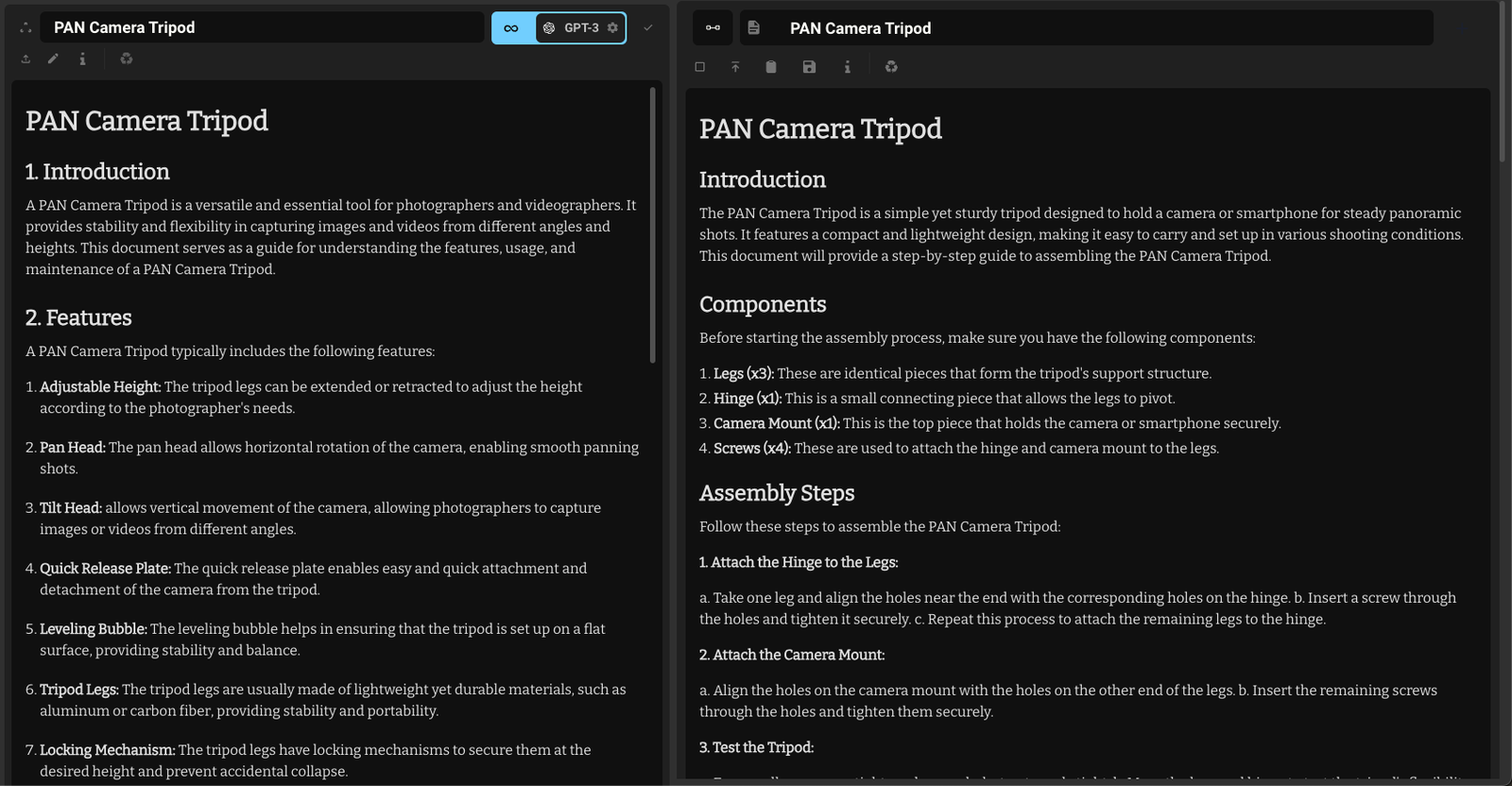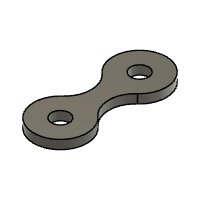Introduction: PAN (Programmable Artificial Nature) Building AI Models for Interacting With Physical Objects
Programmable Artificial Nature (PAN) is a design concept that focuses on creating modular and interchangeable human-machine primitives.
Think of PAN as a tangable programmable language. Functioning as a set of building blocks much like LEGO design systems.
Components can connect to others in multiple ways or be used with other items, allowing for Infinite designs and structures. These devices can be rapidly assembled, disassembled, and reconfigured to meet different needs or adapt to new situations. Through recycling and interoperability, PAN is a hope for environmental good, repairing or repurposing otherwise useless or broken items.

In the physical, these widgets are useful for various applications (Aerospace, Automotive, Consumer Goods and more, see below).

In the digital, PAN can be interfaced with chatbots and used to program and train specialized AI models, designs, and instructions.
Supplies
PAN is designed to be produced with a variety of different manufacturing techniques; included is a table of techn. Fine-tuning datasets can be created and tested in Infinite.Tech and fine-tuning can be performed through Anyscale which is explained here or the OpenAI API.
Fine Tune Trained PAN Proof of Concept Models
- Anyscale - PAN-LLAMA-Beta1
meta-llama/Llama-2-13b-chat-hf:future:p0K4jlY
- OpenAI API - PAN-GPT-3.5-Beta1 -
ft:gpt-3.5-turbo-0613:dark-labs::8ZQTOX74
Attachments
Step 1: Rapid Manufacturing

The first step in manufacturing PAN involves selecting the appropriate manufacturing method based on the desired type of component, material, cost, and strength.
Once the manufacturing method and material are selected, the next step is to prepare the design for production. This may involve creating a digital component model, generating toolpaths for CNC machining, setting up the 3D printer or injection molding machine, or preparing molds for casting.

The design is currently optimized for flat, rapid manufacturability with nesting contours. A multi-step process can be envisioned for extrusion and other techniques.
Step 2: Using Pan (Acoustic)

Without diving deeper into the programmatic side of PAN, it is still a very helpful item to have in your toolbox. Its modular and interchangeable design allows for a wide range of applications, including:

1. Camera Rig Armatures: PAN components can be assembled to create custom camera armatures for photography and videography. The modular design allows for easy adjustments and reconfigurations to accommodate different camera setups and shooting angles.
2. Prototyping Components: Prototype components for various industries, including aerospace, automotive, and consumer goods. Its rapid manufacturing capabilities allow for quick iterations and design improvements, reducing the time and cost associated with traditional prototyping methods.
3. Custom Fixtures and Jigs: Create custom fixtures and jigs for manufacturing and assembly processes. The modular design allows for easy adjustments and modifications, making it an ideal solution for low-volume production runs or custom manufacturing processes.
4. Education and Training: A teaching tool for engineering, design, and manufacturing courses. Its modular design and rapid manufacturing capabilities allow students to prototype and test their designs quickly, providing hands-on experience and practical skills.
5. Art and Design: Custom sculptures, installations, and other artistic works. Its modular design allows for endless possibilities, and its interchangeable components make it easy to modify and reconfigure the piece as needed.

PAN's versatile modular and interchangeable design and rapid manufacturing capabilities make it an ideal solution to prototype, test designs, or create custom applications quickly.
Step 3: (Going Further) Building Custom AI PAN Instruction Generators

Although using chat GPT with prompt engineering might be enough to understand PAN, creating a specialized fine-tuning dataset and using those models will create better results. A template of how to format the instructions to create this data is included.
This involves creating a variety of different use cases and writing clear, concise instructions for each one. Here are some tips for generating the dataset:
1. Define the Use Cases: Start by defining a variety of different use cases for the PAN product. These should be specific scenarios or tasks for which the product can be used. For example, if the product is a modular robot arm, potential use cases might include picking up objects, sorting items, or performing assembly. **Write Clear Instructions**: Write a set of clear, step-by-step instructions for each use case. These should guide the user through the process of setting up and using the product for the specific task. Be sure to include any necessary safety precautions or warnings.
3. Test the Instructions: Once the instructions have been written, test them out to ensure they are clear and easy to follow. This might involve assembling the product and trying out the use case yourself or having someone else follow the instructions to see if they encounter any issues.
4. Refine and Iterate: Based on your testing results, refine and iterate on the instructions as needed. This might involve rewording confusing steps, adding additional detail, or including more visuals to help illustrate the process.
5. Document Everything: Keep a detailed record of all the use cases and instructions you create. This will form the basis of your dataset, which can be used for training AI models, improving product design, or informing future manufacturing processes.
The goal is to create a diverse and comprehensive dataset covering many use cases and scenarios. The more detailed and varied your dataset, the more effective it will be for training AI models and improving the overall usability and versatility
Step 4: Preparing Your Dataset
In order to Fine-Tune a model, you must have it correctly formatted. More info can be found on the API docs but using Infinite.Tech will help simplify this process.

Go to App.Infinite.Tech and sign up if you don't already have an account. This will help in organizing and analyzing our data and models.
- Create a new Project, "PAN Instructions."

- Add your created instructions as individual documents
- Save all and export for Fine-Tuning set

Step 5: Fine Tune Training PAN AI Instruction Models With Open AI or Anyscale
Once you have your prepared JSONL training set, it's time to either train a custom LLAMA or GPT to create instruction sets on the Anyscale Console.
THIS STEP COSTS MONEY TO TRAIN
expect a $5 - $10 to train a custom Anyscale Model
- Go to the Anyscale Fine Tuning Console and hit the Create button.
- Next upload the .jsonl dataset, Set the model to meta-llama/Llama-2-13b-chat-hf
- Clicking Submit starts the training job
Step 6: Using & Testing the Fine Tuned Model With Infinite.Tech
To use and test the fine-tuned PAN model use app.Infinite.Tech, and follow these steps:
- Select Fine-Tuned Model: Add the Model Id meta-llama/Llama-2-13b-chat-hf:future:p0K4jlY to the custom models.

2. Generate or Interact: Use the selected model to generate design variations, interact with the design, or receive AI-generated insights and suggestions.

5. Evaluate Results: Evaluate the generated designs or insights based on your project goals, design requirements, or any specific parameters you've set.
6. Iterate and Refine: Based on the results, iterate on your design, make refinements, and continue using the fine-tuned model as needed to enhance your design process.
With A little prompt engineering, the concept-tuned model performs as expected and formats the instruction manuals.
Step 7: Closing
Concluding this overview: Programmable Adaptive Nature offers a wide range of applications in traversing both the physical and digital realms. Its modular and interchangeable components make it a valuable tool for rapid prototyping, manufacturing, education, art, and more.
The next versions will further their functionality and expandability.
We hope that this can serve as an example process for creating AI design sets.
PAN


Participated in the
Anything Goes Contest


















